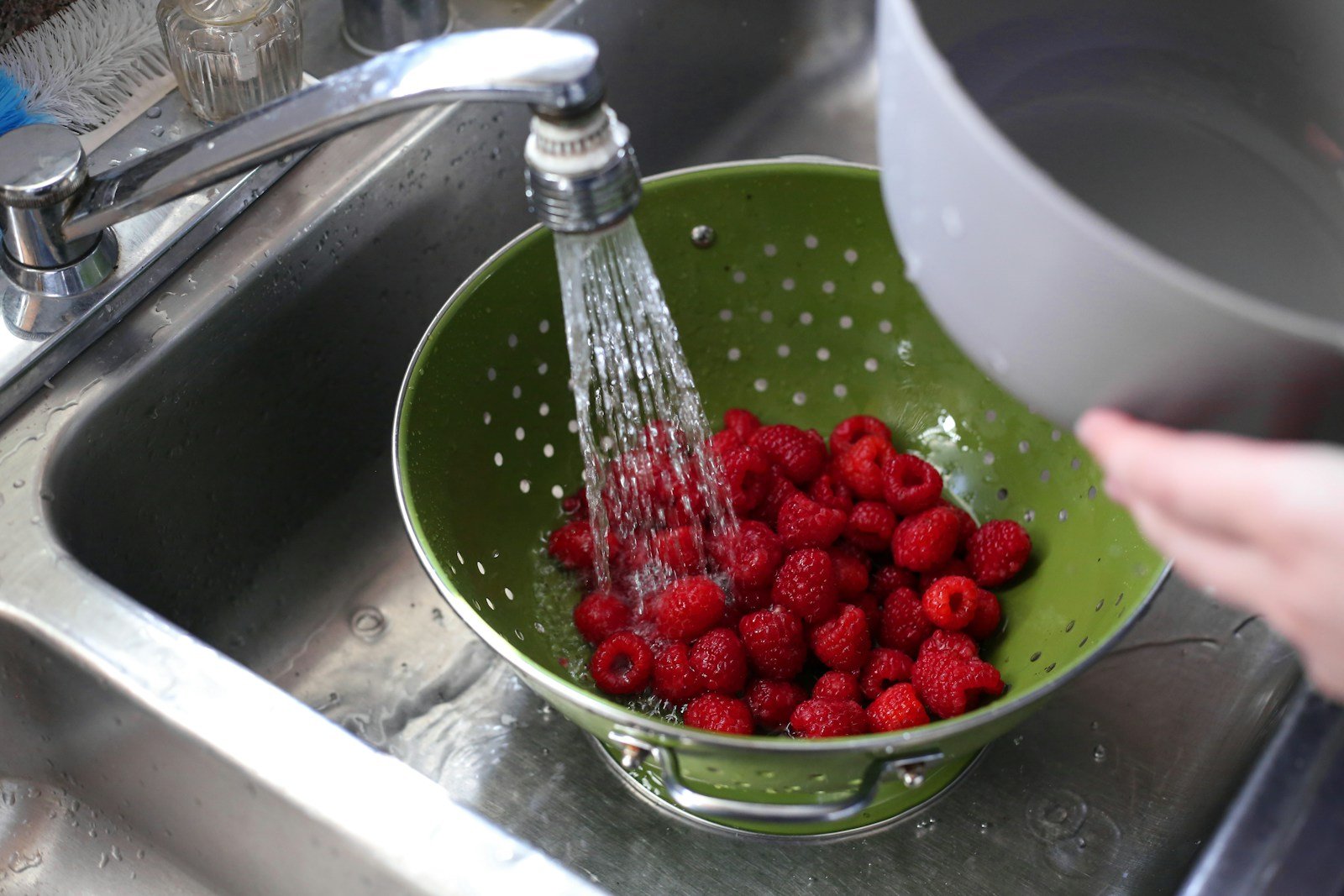Building a zero-waste kitchen starts with understanding what zero waste really means. It’s not about perfection—it’s about reducing your environmental footprint by minimizing waste, particularly food and packaging waste. The kitchen is one of the most significant sources of household waste, so making it as sustainable as possible can have a major impact on both your home and the planet.

Zero-waste living focuses on reducing consumption, reusing resources where possible, and properly disposing or repurposing what you can’t avoid. It’s about making thoughtful choices every day that contribute to a more circular economy. By transforming your kitchen into an eco-friendly space, you can reduce landfill contributions, lower carbon emissions, and save money over time.
The Five Rs: A Foundation for Zero-Waste Living
At the heart of zero-waste living are the five R’s—Refuse, Reduce, Reuse, Recycle, and Rot (Compost). These principles guide every decision you make in your kitchen, from shopping to meal planning and waste management.
- Refuse: Say no to single-use plastics, unnecessary packaging, and anything that can’t be reused or recycled.
- Reduce: Buy only what you need and choose products with minimal or no packaging.
- Reuse: Use containers, bags, and tools multiple times instead of buying new ones.
- Recycle: Properly sort recyclables and know which materials are accepted in your area.
- Rot (Compost): Composting is the final step in the zero-waste journey. It turns food scraps into nutrient-rich soil, closing the loop on waste.
These five R’s work together to help you build a kitchen that supports both sustainability and practicality.
Essential Tools for Your Zero-Waste Kitchen
Having the right tools can make all the difference when it comes to reducing kitchen waste. Here are some must-have items for any eco-conscious cook:
- Reusable Containers: Glass, silicone, or stainless steel containers are great for storing leftovers, meal prepping, and bulk shopping.
- Silicone Produce Bags: These replace plastic bags and can be used for storing fruits, vegetables, and even taking to the grocery store.
- Bamboo Utensils and Cutting Boards: Durable and sustainable alternatives to disposable items.
- Composting Bins: Whether you’re composting indoors or outdoors, having a bin makes it easier to separate food waste from general trash.
- Water Filters: Avoid buying bottled water by using a reusable bottle with an attached filter system.
- Stainless Steel Straws and Cups: Replace single-use plastic items that are often used in the kitchen.
Investing in these tools not only helps reduce your environmental impact but also makes it easier to maintain a zero-waste lifestyle over time.
Shopping Smart: Zero-Waste Grocery Tips
Shopping is one of the most impactful ways to build a zero-waste kitchen. Making thoughtful choices at the grocery store can significantly reduce plastic waste and unnecessary packaging.
Start by shopping at bulk stores where you can bring your own containers to fill with grains, nuts, beans, and spices. This reduces the need for single-use bags and minimizes packaging. When shopping in regular supermarkets or markets, look for products that come with minimal or no packaging. Choose seasonal produce from local farmers, which not only supports the environment by reducing transportation emissions but also often comes without excessive plastic.
Support zero-waste grocery stores or markets whenever possible. These stores prioritize sustainable practices and sell items with compostable or reusable packaging. Be mindful of labels—opt for less processed foods that come in fewer packages. The more you understand what’s in your food, the easier it is to make informed choices that align with a zero-waste lifestyle.
Meal Planning & Food Storage Strategies
Effective meal planning plays a crucial role in reducing kitchen waste and building a zero-waste space. By planning meals ahead of time, you can avoid overbuying ingredients that may go unused or spoil before they’re eaten.
Use a weekly meal planner to track what you’re cooking and when. This helps you buy only the ingredients you need and use up leftovers creatively. Storing food properly is also key—use airtight glass containers instead of plastic ones, which can leach harmful chemicals over time. Consider using preservation techniques such as freezing, pickling, or fermenting to extend the life of your ingredients.
Proper portion control helps reduce food waste, and learning how to repurpose leftovers into new meals keeps things from ending up in the trash. By planning ahead and storing food wisely, you can significantly cut down on kitchen waste while enjoying more flavorful and varied meals throughout the week.
Composting: Turning Waste Into Resource
Composting is one of the most effective ways to manage food scraps and reduce landfill contributions. Instead of throwing away vegetable peels, fruit cores, coffee grounds, and eggshells, you can turn them into nutrient-rich compost that enhances your garden or indoor plants.
Getting started with composting doesn’t require a large outdoor space—indoor compost bins are available for small apartments and homes without access to outside land. Choose a bin with good airflow and drainage, and add food scraps regularly while balancing them with “brown” materials like dried leaves or shredded paper.
It’s important to know what can and cannot be composted. Avoid meat, dairy, and oily foods that may attract pests or cause odors. Stick to fruits, vegetables, coffee grounds, tea bags (without plastic tags), and eggshells. With proper care, your compost pile will break down into rich soil in a matter of weeks.
Creative Recipes with Leftovers & Imperfect Produce
One of the most enjoyable aspects of building a zero-waste kitchen is learning how to use every part of your ingredients—especially leftovers and “imperfect” produce that may have been discarded otherwise.
There are countless creative recipes you can make using vegetable scraps, stale bread, or leftover proteins. For example, vegetable peels and stems can be used to make homemade broth; stale bread can become croutons or bread pudding. Leftover cooked chicken, rice, or pasta can be transformed into new meals with a few simple additions.
Imperfect fruits and vegetables—those that are slightly bruised or not perfectly shaped—are often discarded at stores but can be just as flavorful. Use them in smoothies, baked goods, or soups. Fermenting and preserving food is another great way to reduce waste while adding flavor and nutritional value to your meals.
Overcoming Challenges in the Zero-Waste Kitchen
While building a zero-waste kitchen has many benefits, it can also come with its fair share of challenges. One common obstacle is limited access to bulk stores or zero-waste shops. If this is an issue for you, consider joining online communities where people trade goods, or look for local farmers’ markets that accept reusable containers.
Social situations may also present challenges—such as being in a restaurant or at a party without eco-friendly alternatives. In these cases, it’s important to bring your own utensils, straws, and cups when possible, and politely decline single-use items.
Time management can be another hurdle, especially for busy households. Meal planning, batch cooking, and investing in efficient tools can help reduce the effort required to maintain a zero-waste kitchen. Additionally, dealing with food waste from children or pets may require some creativity and patience—but it’s all part of the learning process.
Inspiration & Community
Building a zero-waste kitchen is not just about reducing waste—it’s also an opportunity for personal growth, community engagement, and inspiration. Many people have successfully transformed their kitchens into eco-friendly spaces that support both sustainability and practical living.
Look for real-life success stories online or in books to get ideas on how others are making the switch. Joining zero-waste communities—whether locally or through social media—can provide valuable tips, encouragement, and motivation as you work toward your goals. Engaging with others who share similar values can make the journey more enjoyable and sustainable.
There are also numerous resources available for further learning, including documentaries, books, podcasts, and online courses that explore zero-waste living in depth. By connecting with others on this path, you’ll find that building a zero-waste kitchen is not only possible—it’s rewarding.
Taking the First Step Toward a Zero-Waste Kitchen
Building a zero-waste kitchen starts with small, consistent actions that add up over time. Whether it’s using reusable containers, composting food scraps, or planning meals to reduce waste, every step contributes to a more sustainable lifestyle.
Remember, you don’t have to make all changes at once—progress is key. Start by choosing one area of your kitchen to focus on first and build from there. The journey toward zero-waste living can be challenging, but it’s also incredibly rewarding in terms of environmental impact, cost savings, and overall well-being.
If you’re inspired by the ideas shared here, take action today. Share your journey with friends or family, or consider starting a community composting initiative. Every small change helps create a bigger movement toward a more sustainable future—one kitchen at a time.







